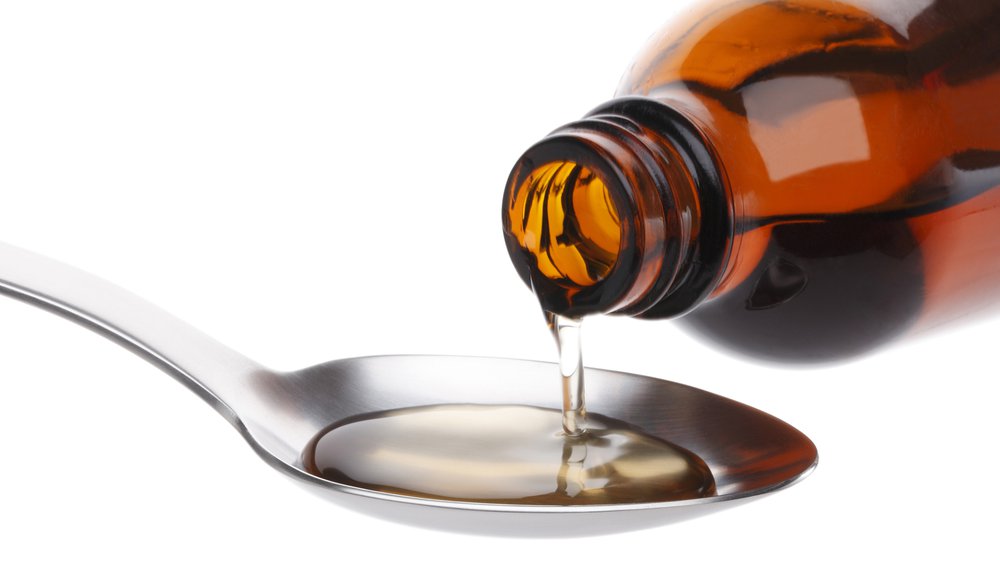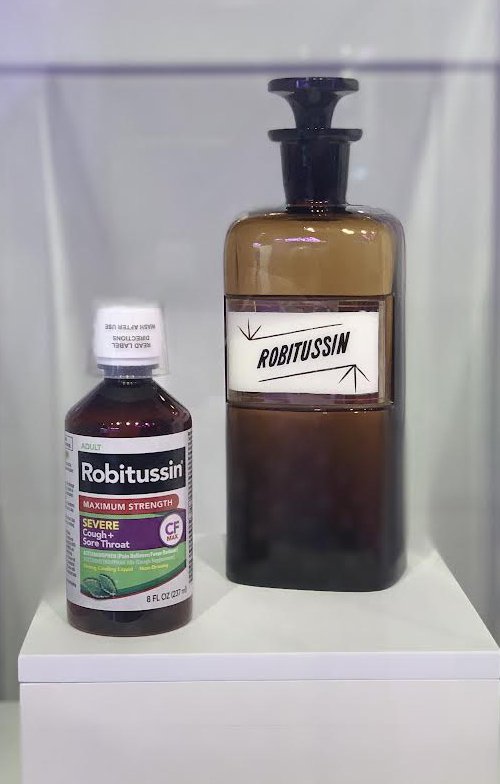Think about the last time you looked at the ingredient list on something you consumed. Was it because you were making a new recipe for dinner? Were you checking a breakfast choice for allergens, such as wheat or egg? Maybe you wanted to know about added sugars or artificial dyes in a beverage. What about the last time you took some medicine … did you check the ingredient list then?

Image credit: Getty Images
Most of the time when people mention ingredients, they mean in foods or drinks, but the list could be just as long–or longer–in common medicines we take. As we head into cold and flu season in the United States, and people might be taking more of these products, do you know what’s in your cold medicine? Let’s see how Robitussin’s active ingredients, the substances that make changes to the body in some way, work.
Why Robitussin? We found inspiration to dig into that specific product because in The Forge, a glass Robitussin bottle from the mid-1900s is displayed along with other Virginia-based inventions. It’s a good reminder that Virginia has been a STEM leader for decades!
Today Robitussin has many formulations, each with a specific set of active ingredients. In Robitussin DM, for example, the ingredient list includes dextromethorphan and guaifenesin. (Chemicals have such fascinating names!)

Image Credit: Getty Images
Dextromethorphan suppresses coughing by temporarily changing not your throat or lungs but your brain! Scientists believe dextromethorphan lowers the activity of brain cells that control your coughing reflex. The exact mechanism is unknown, but one possibility is that it binds to receptors in the brain stem. Because dextromethorphan can bind to several different receptor sites in the brain, scientists are also testing to see if it can be used to treat depression, seizures and pain.
Guaifenesin loosens mucus, which can get really thick when you have a cold, so it’s easier to cough up. Guaifenesin is found naturally in the guaiac tree. Native Americans used this bark for medicine first, and then Europeans started to use it to treat syphilis (unsuccessfully) in the 1500s. Just like with dextromethorphan, scientists don't know exactly how it works, but they do know it decreases the thickness and amount of mucus, in addition to making the little hair-like structures in the lungs move the mucus out.

Robitussin Bottle with Stopper, Glass, enamel, Early 20th century, On loan from the Virginia Museum of History & Culture, Richmond, VA
The other ingredients in Robitussin may not have an affect on the body but they make sure the active ingredients work as well as possible. Some help stabilize the chemicals so they doesn’t break down before you take it. Or they help your body absorb the medication. Sometimes those ingredients add flavors or change the color of the medication. There’s no shame in wanting your medicine to taste like cherry and orange instead of … well … medicine!
The pharmaceutical company A. H. Robins Company created Robitussin in 1949. The company was started in Richmond by the Robins family. Robitussin was named “the number one seller among cough preparations in pharmacies” in 1978. It helped the company grow into a multi-billion dollar company. The Robins family were large philanthropic donors to the city with the money they earned from their company, which is now a part of Pfizer.
So, the next time you have a sniffle or tickle and reach for some cold meds, look up the ingredients in your medicine and don’t be intimidated by the long name. These chemicals can have helpful effects on your body. Learning how medicine works also teaches you about how your body works!


